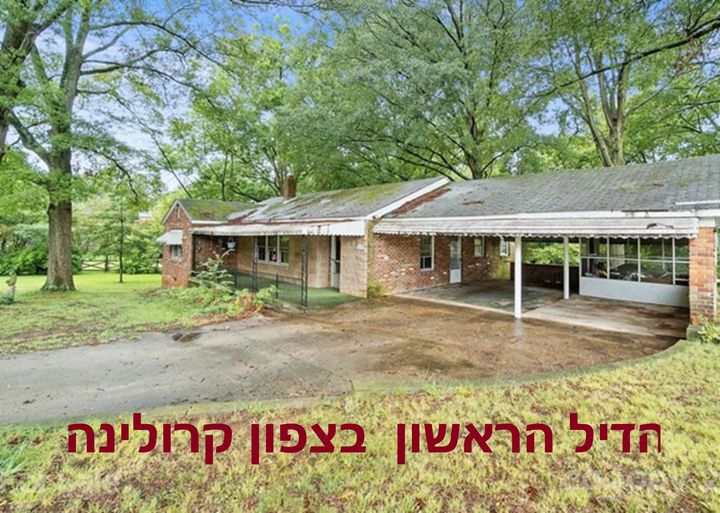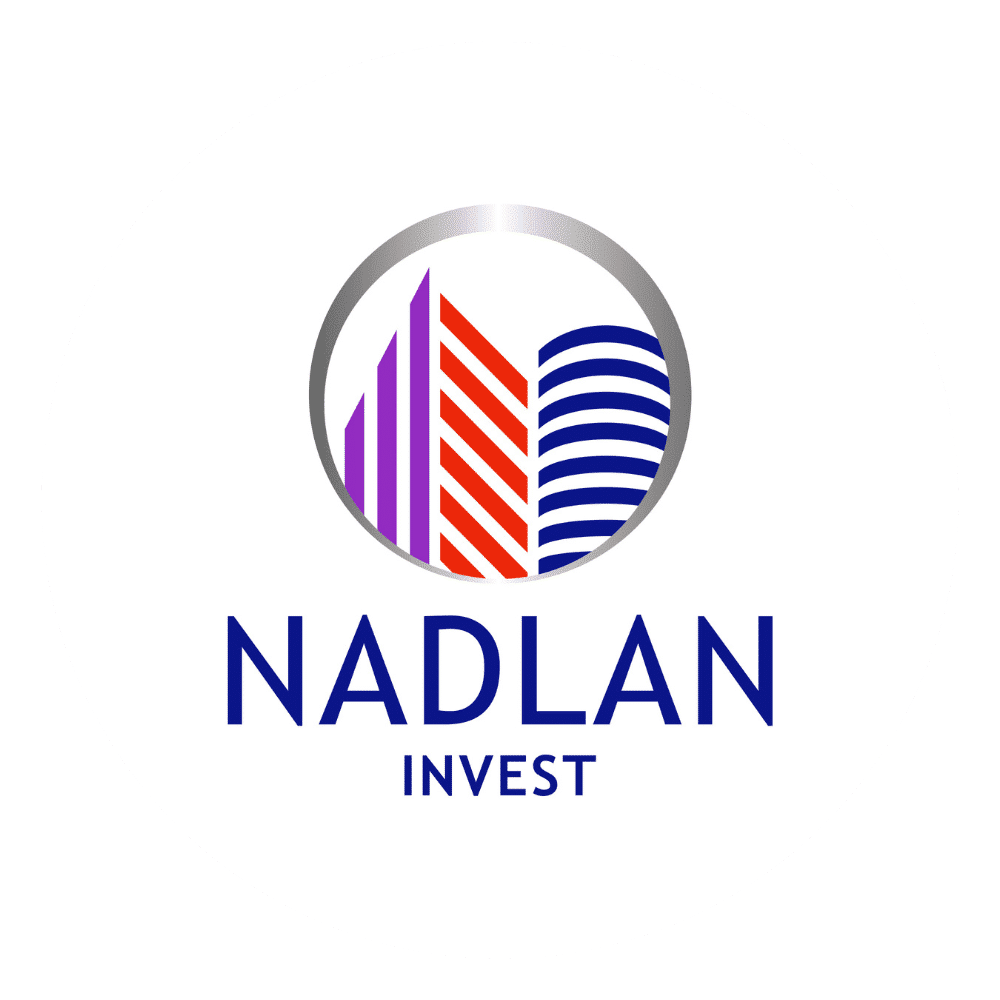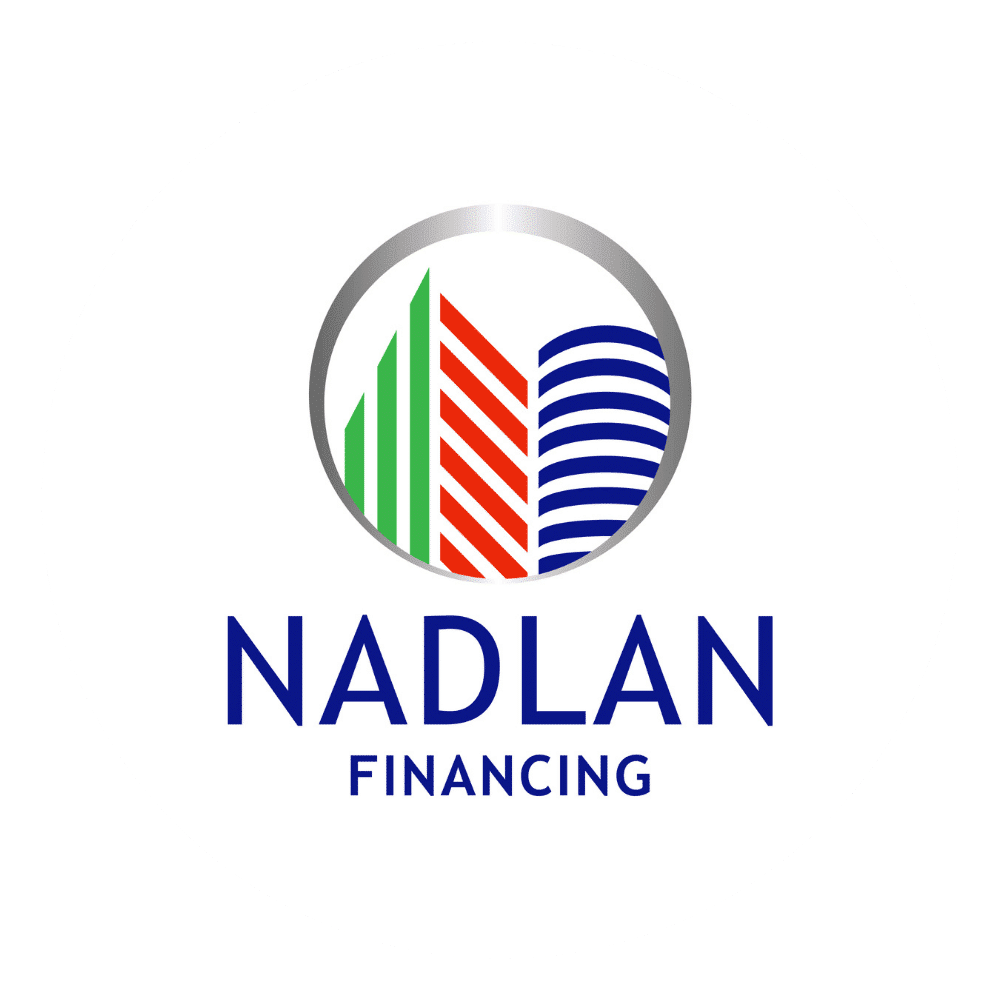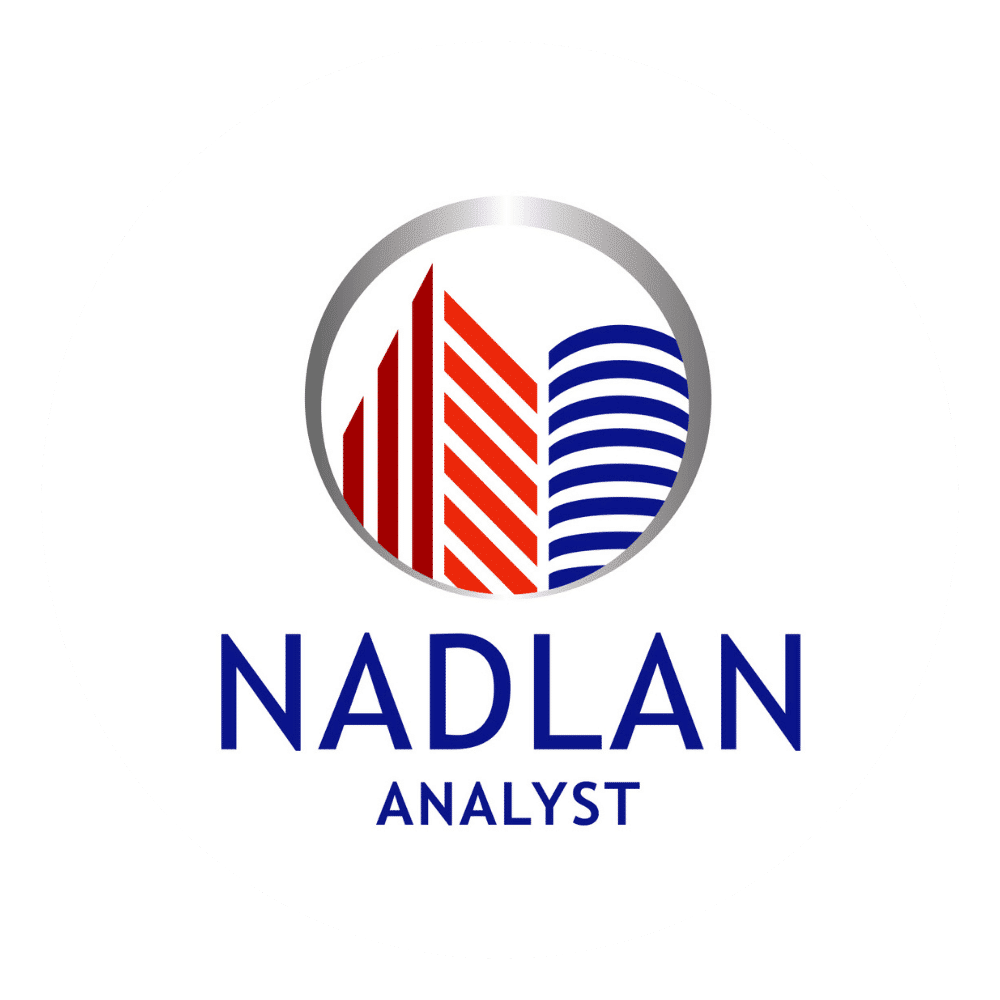How to increase your passive income using the BRRRR method

The BRRRR Method
Imagine yourself attending a real estate investment networking event, and you hear someone say “BRRRRR”. Chances are your colleague is not responding to room temperature but is discussing a popular investment strategy known as the BRRRR method. Anyone wondering how to build real estate wealth should consider this unique framework that represents a hybrid between active and passive income.
Meaning BRRRR
The BRRRR method means “Buy, Renovate, Rent, Refinance, Return”, in English: “Buy, rehab, rent, refinance, repeat”
And describes a strategy and framework used by investors interested in building passive income over time. These acronyms represent steps that must be applied in the exact order in which they appear. First, an investor acquires a property and he continues to rehabilitate. The renewed property is then leased to tenants for an extended period, through which the rental income can allow the owner to pay the mortgage, earn profits and build equity over time. Once a substantial amount of equity has been built in the property, the investor can purchase a second property by refinancing the first, and so on.
Matt Woodley of Mover Focus states that the BRRRR method is a real estate investment strategy that helps investors identify, research and purchase properties at a discount. The BRRRR method involves three stages: brainstorming, research and resale. By brainstorming potential investment assets, investors can understand the market and find undervalued assets. After research, investors can determine if the property is worth buying or not and make the necessary repairs or upgrades. Finally, after purchase and renovation, the property can be resold at a profit. ”
Click to increase your passive income using the BRRRR method

buy
The first letter in the BRRRR method is 'B', which stands for Buy. When searching lists, keep in mind that this step serves as a critical point and determines the outcome of the investment. There is a complicated junction between making sure a property represents a proper investment transaction and promising good performance as a rental property.
This will require intensive transaction analysis, which includes calculating the cost of renovations, estimating monthly rental expenses and confirming that the rental income received will provide a satisfactory profit margin. Ensuring the strong performance of a rental property may include researching the best rental markets and ensuring that the purchase price provides enough buffer zone to allow for renovation costs. Many investors rely on the 70 percent rule, which estimates the cost of repairs and after the repair, which helps determine a maximum bid for the property. Through this rule, they can better ensure that profit remains after the property is renovated.
renovation
At the most basic level, apartment owners need to identify how to turn their rental properties into residential and functional. Once these requirements are met, updates or renovations can be considered that add value to the property (thus justifying raising rental rates). On the other hand, investors should be wary of making excessive upgrades that will cost more than what can be generated from rental income.
The refurbishment phase of the BRRRR strategy, which represents the first ‘R’ out of four, requires an in-depth cost-benefit analysis at each stage. Investors are advised to opt only for home remodeling projects that will provide a high return on investment. Here are some high-ROI rehab projects to keep in mind:
Roof repairs: It is common for appraisers to return the money you spent on the value of the property when adding a new roof.
Updated Kitchen: Kitchens are often unattractive, but many of the features may still be usable. Also, homes with sample kitchens are not eligible for financing, which often buys cash. Home restoration has proven to have a high ROI.
Gypsum wall repair: Gypsum wall damage also makes a home unfit for financing. Although it may be a red flag for most apartment buyers, this can be an opportunity for restorers as drywall is actually very cheap to repair.
Gardening: Simple gardening projects, like removing overgrown vegetation, can be done at little cost to you. This type of landscaping also does not require a professional to complete it, making it a cheap remodeling project.
Bathroom update: Bathrooms are usually not very large and their material and labor costs are cheap. Updating bathrooms will allow your home to compete with better quality homes in the area for a small cost for you.
Additional bedrooms: Homes with an exceptional amount of square meters but lacking enough bedrooms offer renovators an opportunity to increase the value at a small cost for them. Increasing the house's bedroom to 3 or 4 will allow it to be more competitive with higher level properties in the area.
renting
Once the property renovation phase is completed, the investor can carry out the rental phase of the process. This may include filtering and selecting tenants, managing a cycle and responding to maintenance and repair requests. After a certain period of time, an investor will usually understand if his practice in due diligence was satisfactory. Possible things that can go wrong include vacancies, bad tenants or rental expenses that exceed the income generated. All of these possible outcomes can quickly drive an underwater property, increasing the risk of foreclosure. It is not meant to scare investors from becoming a homeowner or running the BRRRR strategy, but only to emphasize the importance of running the numbers correctly before making any investment decision.
מימון
Once your property has been renovated and rented efficiently, you can start planning a plan on how to recycle it. Some banks will offer cash refinancing, while others will only offer to pay off existing debt; You will want to choose the first of these two options. You will also want to pay attention to the required 'seasoning period', which indicates how long you must hold the property before the lender considers refinancing against the value of the property. Although you may come across some banks that are not willing to refinance single-family rental properties, investors can usually connect to their networks to find a lender that fits their refinancing needs.
Return
Finally, the investor can use the refinancing of his first leased property to finance the purchase and renovation of the second. Cash refinancing offers additional benefits, such as interest rates that are often favorable compared to other sources of capital, tax benefits and control over your financial timeline. Facing the learning curve, a confident investor will encounter some difficulties and mistakes already from his first BRRRR cycle. However, they can apply their experience and new wisdom acquired when dealing with their second, third or fourth property, and so on.
Example of the BRRRR method
An example overview of the BRRRR real estate strategy can help illustrate how to perform each step.
Suppose Johnny lives in Austin, Texas, and is interested in purchasing a home to take advantage of the rental market that is developing there. He finds a $ 200,000 property and manages the numbers on the deal. Johnny can pay a down payment of $ 40,000 and take out a loan for the remaining $ 160,000. After walking around the house with a contractor, Johnny decides to spend $ 10,000 on renovating the property. So far, we have the following numbers:
Selling price: $ 200,000
Down payment: $ 40,000
Loan amount: $ 160,000
Renovation costs: $ 10,000
Upon completion of the renovations, the property is valued at $ 250,000, and Johnny can rent it for $ 2,500. About a year later, Johnny refinances and takes out a loan of 75 percent of the estimated value: $ 187,500. He then uses that amount to pay off the original loan of $ 160,000, leaving him $ 27,500 (plus the current monthly rental income) to purchase and rehabilitate another property. The more Johnny follows this process, the more investment assets he can accumulate over time. While this example uses simplified numbers, it should help illustrate the BRRRR process in action.
How to finance BRRRR assets
One of the most difficult obstacles for novice investors is figuring out how to finance BRRRR assets. Usually, you will need to finance the property more than once. Firstly, when purchasing the property, and secondly for any repairs or improvements. Most novice investors do not have the funds to finance the property without a loan. If you are purchasing a property for the first time, Here are some options:
Conventional bank loans: as a down payment you will need about 20% -25%. However, the interest rate should be similar to that of an owner loan. It is important to note that if the property is in poor enough condition, the bank may not offer you a loan to purchase it.
Local Bank Loans: Local banks offer a more significant amount of flexibility when lending for rental properties. While they will likely require the same down payment as conventional bank loans, they may also ignore any expenses on repairs. They also offer flexibility regarding mortgage restrictions and debt to income ratio issues.
Private Lenders: Private money is purchased by people you know personally, whether it's family, friends, business partners or other investors. In this case, rates may vary depending on your property and your relationship with the lender. It is common for private lenders to also fund any repairs the property needs.
Lenders with hard money: These lenders specialize in loans to homeowners and rental investors. The cost and rates of hard money lenders usually exceed bank loans. However, they are likely to cover repairs and improvements.
Refinancing of BRRR asset
There are two main ways to recycle your BRRR asset. One of the options available is through conventional financing. This option is the most popular and comes with the lowest interest rates available. Another option for refinancing can be found in commercial financing, although they come with higher interest rates.
BRRRR Benefits
Any investment strategy will ensure certain benefits while bearing a certain level of risk, and the BRRRR method is not exceptional. Before pursuing any strategy, be sure to review the pros and cons and determine for yourself whether BRRRR is the right strategy for you or not:
Potential for return: One of the main benefits is the possibility of a high return on investment. When done right, investors can purchase a distressed property with a relatively low investment in cash, repair it and rent it out for a strong cash flow.
Equity building: The opinion should also be given on the amount of equity built in the rehabilitation phase. When adopting a passive income strategy, many investors only generate cash flow from an asset that is worth the price at which it will be purchased.
Top-level tenants: If a property has been properly renovated to meet consumer standards in a specific market, it is likely to attract excellent tenants. Tenants who are willing to pay a high dollar for their rental property in exchange for certain properties and services are more likely to take better care of the property and reduce their expenses. Better tenants often translate directly into improved cash flow.
Scale Benefits: Once you get to your BRRRR step, you can achieve something called scale benefits, where owning and operating multiple properties for rent at the same time can help you lower your overall costs by reducing your average cost per property and spreading your risk.
BRRRR Disadvantages
The following list helps shed some light on potential risks associated with the BRRRR strategy. However, it should be noted that these points are not necessarily disadvantages. Instead, they warn investors of what could happen if they are not careful and do not object to their due diligence:
Expensive loans: When choosing to use a short-term loan or hard money to finance a property purchase, investors can find themselves over-leveraged, especially during the renovation phase. According to Brian, a real estate investor and founder of SparkRental.com, "too many new investors underestimate expenses such as repairs, maintenance, vacancy rate and other irregular but unavoidable expenses that do not hurt you every month." Investors should make sure they know how they will pay mortgage payments while the property is not generating any income.
Renovation: Taking on a major renovation project can prove costly, with many headaches along the way. Renovation means dealing with project schedules, managing contractors and subcontractors and dealing with unforeseen problems. Make sure you have the right resources and contingency plans before tackling a project.
Waiting period: BRRRR is a strategy related to a longer time horizon, which includes at least two waiting periods. The first is in the renovation phase, where the investor must improve a property before he can place tenants and start earning income. The second waiting period is seasoning, a term that describes the period an investor must wait before the lender allows for cash financing.
Valuation Risk: Investors typically refinance an asset based on the valuation of the asset, rather than how much money they have paid into it. There is always a risk that the property will not be valued at the expected amount. This should serve as a warning that activating the numbers correctly in advance is essential.
Who should use the BRRRR method
The BRRRR method is perfect for investors looking to build a passive income portfolio from start to finish. The process is more demanding than purchasing a rental unit, although it can be very rewarding. Investors who are comfortable with a certain level of risk, who have available capital for an initial down payment, and who are willing to roll up their sleeves for in-depth market research, will be well suited to this real estate strategy.
Who should not use the BRRRR method
One of the biggest determinants in deciding whether the BRRR method would be appropriate is whether you are willing to take on a renovation project or not. Arguably, this is the most intensive step required in the BRRRR method; And those who do not have the time or dedication required to see renovation will not find success. For those who are afraid of the thought of managing a renovation but still want to implement the BRRRR strategy, I recommend building a strong real estate team. It can be a business partner who is willing to be more active if you provide the capital. Alternatively, it could be finding a reliable contractor who can handle the bulk of the renovation process.
How much can you earn using the BRRRR method?
Investors can achieve a significant return using the BRRRR method, if they are able to ensure the right purchase price for each property. Investors should also pay close attention to the market, as this will determine how well they are able to find consistent tenants and generate rental income. Essentially, the amount of money you can make with the BRRRR method comes down to how much you can find excellent leads at all stages of the process. As you can imagine, the results can vary depending on a number of factors in financing methods. Always be sure to check your due diligence and develop a reliable system for analyzing potential investments.
Alternatives to the BRRRR method
If you decide that the BRRRR method is not the right real estate investment strategy for you, there are other strategies you can do. One option is to purchase a property and rent it out, while charging the monthly rent paid on the property. Another option is to finance real estate en masse. It is a process of utilizing financing from a wide variety of investors who pool their money to purchase real estate, which allows for investments made with less money and labor.
Click to increase your passive income using the BRRRR method
Imagine yourself attending a real estate investment networking event, and you hear someone say “BRRRRR”. Chances are your colleague is not responding to room temperature but is discussing a popular investment strategy known as the BRRRR method. Anyone wondering how to build real estate wealth should consider this unique framework that represents a hybrid between active and passive income.
Meaning BRRRR
The BRRRR method means “Buy, Renovate, Rent, Refinance, Return”, in English: “Buy, rehab, rent, refinance, repeat”
And describes a strategy and framework used by investors interested in building passive income over time. These acronyms represent steps that must be applied in the exact order in which they appear. First, an investor acquires a property and he continues to rehabilitate. The renewed property is then leased to tenants for an extended period, through which the rental income can allow the owner to pay the mortgage, earn profits and build equity over time. Once a substantial amount of equity has been built in the property, the investor can purchase a second property by refinancing the first, and so on.
Matt Woodley of Mover Focus states that the BRRRR method is a real estate investment strategy that helps investors identify, research and purchase properties at a discount. The BRRRR method involves three stages: brainstorming, research and resale. By brainstorming potential investment assets, investors can understand the market and find undervalued assets. After research, investors can determine if the property is worth buying or not and make the necessary repairs or upgrades. Finally, after purchase and renovation, the property can be resold at a profit. ”
Click to increase your passive income using the BRRRR method
buy
The first letter in the BRRRR method is 'B', which stands for Buy. When searching lists, keep in mind that this step serves as a critical point and determines the outcome of the investment. There is a complicated junction between making sure a property represents a proper investment transaction and promising good performance as a rental property.
This will require intensive transaction analysis, which includes calculating the cost of renovations, estimating monthly rental expenses and confirming that the rental income received will provide a satisfactory profit margin. Ensuring the strong performance of a rental property may include researching the best rental markets and ensuring that the purchase price provides enough buffer zone to allow for renovation costs. Many investors rely on the 70 percent rule, which estimates the cost of repairs and after the repair, which helps determine a maximum bid for the property. Through this rule, they can better ensure that profit remains after the property is renovated.
renovation
At the most basic level, apartment owners need to identify how to turn their rental properties into residential and functional. Once these requirements are met, updates or renovations can be considered that add value to the property (thus justifying raising rental rates). On the other hand, investors should be wary of making excessive upgrades that will cost more than what can be generated from rental income.
The refurbishment phase of the BRRRR strategy, which represents the first ‘R’ out of four, requires an in-depth cost-benefit analysis at each stage. Investors are advised to opt only for home remodeling projects that will provide a high return on investment. Here are some high-ROI rehab projects to keep in mind:
Roof repairs: It is common for appraisers to return the money you spent on the value of the property when adding a new roof.
Updated Kitchen: Kitchens are often unattractive, but many of the features may still be usable. Also, homes with sample kitchens are not eligible for financing, which often buys cash. Home restoration has proven to have a high ROI.
Gypsum wall repair: Gypsum wall damage also makes a home unfit for financing. Although it may be a red flag for most apartment buyers, this can be an opportunity for restorers as drywall is actually very cheap to repair.
Gardening: Simple gardening projects, like removing overgrown vegetation, can be done at little cost to you. This type of landscaping also does not require a professional to complete it, making it a cheap remodeling project.
Bathroom update: Bathrooms are usually not very large and their material and labor costs are cheap. Updating bathrooms will allow your home to compete with better quality homes in the area for a small cost for you.
Additional bedrooms: Homes with an exceptional amount of square meters but lacking enough bedrooms offer renovators an opportunity to increase the value at a small cost for them. Increasing the house's bedroom to 3 or 4 will allow it to be more competitive with higher level properties in the area.
renting
Once the property renovation phase is completed, the investor can carry out the rental phase of the process. This may include filtering and selecting tenants, managing a cycle and responding to maintenance and repair requests. After a certain period of time, an investor will usually understand if his practice in due diligence was satisfactory. Possible things that can go wrong include vacancies, bad tenants or rental expenses that exceed the income generated. All of these possible outcomes can quickly drive an underwater property, increasing the risk of foreclosure. It is not meant to scare investors from becoming a homeowner or running the BRRRR strategy, but only to emphasize the importance of running the numbers correctly before making any investment decision.
מימון
Once your property has been renovated and rented efficiently, you can start planning a plan on how to recycle it. Some banks will offer cash refinancing, while others will only offer to pay off existing debt; You will want to choose the first of these two options. You will also want to pay attention to the required 'seasoning period', which indicates how long you must hold the property before the lender considers refinancing against the value of the property. Although you may come across some banks that are not willing to refinance single-family rental properties, investors can usually connect to their networks to find a lender that fits their refinancing needs.
Return
Finally, the investor can use the refinancing of his first leased property to finance the purchase and renovation of the second. Cash refinancing offers additional benefits, such as interest rates that are often favorable compared to other sources of capital, tax benefits and control over your financial timeline. Facing the learning curve, a confident investor will encounter some difficulties and mistakes already from his first BRRRR cycle. However, they can apply their experience and new wisdom acquired when dealing with their second, third or fourth property, and so on.
Example of the BRRRR method
An example overview of the BRRRR real estate strategy can help illustrate how to perform each step.
Suppose Johnny lives in Austin, Texas, and is interested in purchasing a home to take advantage of the rental market that is developing there. He finds a $ 200,000 property and manages the numbers on the deal. Johnny can pay a down payment of $ 40,000 and take out a loan for the remaining $ 160,000. After walking around the house with a contractor, Johnny decides to spend $ 10,000 on renovating the property. So far, we have the following numbers:
Selling price: $ 200,000
Down payment: $ 40,000
Loan amount: $ 160,000
Renovation costs: $ 10,000
Upon completion of the renovations, the property is valued at $ 250,000, and Johnny can rent it for $ 2,500. About a year later, Johnny refinances and takes out a loan of 75 percent of the estimated value: $ 187,500. He then uses that amount to pay off the original loan of $ 160,000, leaving him $ 27,500 (plus the current monthly rental income) to purchase and rehabilitate another property. The more Johnny follows this process, the more investment assets he can accumulate over time. While this example uses simplified numbers, it should help illustrate the BRRRR process in action.
How to finance BRRRR assets
One of the most difficult obstacles for novice investors is figuring out how to finance BRRRR assets. Usually, you will need to finance the property more than once. Firstly, when purchasing the property, and secondly for any repairs or improvements. Most novice investors do not have the funds to finance the property without a loan. If you are purchasing a property for the first time, Here are some options:
Conventional bank loans: as a down payment you will need about 20% -25%. However, the interest rate should be similar to that of an owner loan. It is important to note that if the property is in poor enough condition, the bank may not offer you a loan to purchase it.
Local Bank Loans: Local banks offer a more significant amount of flexibility when lending for rental properties. While they will likely require the same down payment as conventional bank loans, they may also ignore any expenses on repairs. They also offer flexibility regarding mortgage restrictions and debt to income ratio issues.
Private Lenders: Private money is purchased by people you know personally, whether it's family, friends, business partners or other investors. In this case, rates may vary depending on your property and your relationship with the lender. It is common for private lenders to also fund any repairs the property needs.
Lenders with hard money: These lenders specialize in loans to homeowners and rental investors. The cost and rates of hard money lenders usually exceed bank loans. However, they are likely to cover repairs and improvements.
Refinancing of BRRR asset
There are two main ways to recycle your BRRR asset. One of the options available is through conventional financing. This option is the most popular and comes with the lowest interest rates available. Another option for refinancing can be found in commercial financing, although they come with higher interest rates.
BRRRR Benefits
Any investment strategy will ensure certain benefits while bearing a certain level of risk, and the BRRRR method is not exceptional. Before pursuing any strategy, be sure to review the pros and cons and determine for yourself whether BRRRR is the right strategy for you or not:
Potential for return: One of the main benefits is the possibility of a high return on investment. When done right, investors can purchase a distressed property with a relatively low investment in cash, repair it and rent it out for a strong cash flow.
Equity building: The opinion should also be given on the amount of equity built in the rehabilitation phase. When adopting a passive income strategy, many investors only generate cash flow from an asset that is worth the price at which it will be purchased.
Top-level tenants: If a property has been properly renovated to meet consumer standards in a specific market, it is likely to attract excellent tenants. Tenants who are willing to pay a high dollar for their rental property in exchange for certain properties and services are more likely to take better care of the property and reduce their expenses. Better tenants often translate directly into improved cash flow.
Scale Benefits: Once you get to your BRRRR step, you can achieve something called scale benefits, where owning and operating multiple properties for rent at the same time can help you lower your overall costs by reducing your average cost per property and spreading your risk.
BRRRR Disadvantages
The following list helps shed some light on potential risks associated with the BRRRR strategy. However, it should be noted that these points are not necessarily disadvantages. Instead, they warn investors of what could happen if they are not careful and do not object to their due diligence:
Expensive loans: When choosing to use a short-term loan or hard money to finance a property purchase, investors can find themselves over-leveraged, especially during the renovation phase. According to Brian, a real estate investor and founder of SparkRental.com, "too many new investors underestimate expenses such as repairs, maintenance, vacancy rate and other irregular but unavoidable expenses that do not hurt you every month." Investors should make sure they know how they will pay mortgage payments while the property is not generating any income.
Renovation: Taking on a major renovation project can prove costly, with many headaches along the way. Renovation means dealing with project schedules, managing contractors and subcontractors and dealing with unforeseen problems. Make sure you have the right resources and contingency plans before tackling a project.
Waiting period: BRRRR is a strategy related to a longer time horizon, which includes at least two waiting periods. The first is in the renovation phase, where the investor must improve a property before he can place tenants and start earning income. The second waiting period is seasoning, a term that describes the period an investor must wait before the lender allows for cash financing.
Valuation Risk: Investors typically refinance an asset based on the valuation of the asset, rather than how much money they have paid into it. There is always a risk that the property will not be valued at the expected amount. This should serve as a warning that activating the numbers correctly in advance is essential.
Who should use the BRRRR method
The BRRRR method is perfect for investors looking to build a passive income portfolio from start to finish. The process is more demanding than purchasing a rental unit, although it can be very rewarding. Investors who are comfortable with a certain level of risk, who have available capital for an initial down payment, and who are willing to roll up their sleeves for in-depth market research, will be well suited to this real estate strategy.
Who should not use the BRRRR method
One of the biggest determinants in deciding whether the BRRR method would be appropriate is whether you are willing to take on a renovation project or not. Arguably, this is the most intensive step required in the BRRRR method; And those who do not have the time or dedication required to see renovation will not find success. For those who are afraid of the thought of managing a renovation but still want to implement the BRRRR strategy, I recommend building a strong real estate team. It can be a business partner who is willing to be more active if you provide the capital. Alternatively, it could be finding a reliable contractor who can handle the bulk of the renovation process.
How much can you earn using the BRRRR method?
Investors can achieve a significant return using the BRRRR method, if they are able to ensure the right purchase price for each property. Investors should also pay close attention to the market, as this will determine how well they are able to find consistent tenants and generate rental income. Essentially, the amount of money you can make with the BRRRR method comes down to how much you can find excellent leads at all stages of the process. As you can imagine, the results can vary depending on a number of factors in financing methods. Always be sure to check your due diligence and develop a reliable system for analyzing potential investments.
Alternatives to the BRRRR method
If you decide that the BRRRR method is not the right real estate investment strategy for you, there are other strategies you can do. One option is to purchase a property and rent it out, while charging the monthly rent paid on the property. Another option is to finance real estate en masse. It is a process of utilizing financing from a wide variety of investors who pool their money to purchase real estate, which allows for investments made with less money and labor.
Click to increase your passive income using the BRRRR method
Imagine yourself attending a real estate investment networking event, and you hear someone say “BRRRRR”. Chances are your colleague is not responding to room temperature but is discussing a popular investment strategy known as the BRRRR method. Anyone wondering how to build real estate wealth should consider this unique framework that represents a hybrid between active and passive income.
Meaning BRRRR
The BRRRR method means “Buy, Renovate, Rent, Refinance, Return”, in English: “Buy, rehab, rent, refinance, repeat”
And describes a strategy and framework used by investors interested in building passive income over time. These acronyms represent steps that must be applied in the exact order in which they appear. First, an investor acquires a property and he continues to rehabilitate. The renewed property is then leased to tenants for an extended period, through which the rental income can allow the owner to pay the mortgage, earn profits and build equity over time. Once a substantial amount of equity has been built in the property, the investor can purchase a second property by refinancing the first, and so on.
Matt Woodley of Mover Focus states that the BRRRR method is a real estate investment strategy that helps investors identify, research and purchase properties at a discount. The BRRRR method involves three stages: brainstorming, research and resale. By brainstorming potential investment assets, investors can understand the market and find undervalued assets. After research, investors can determine if the property is worth buying or not and make the necessary repairs or upgrades. Finally, after purchase and renovation, the property can be resold at a profit. ”
buy
The first letter in the BRRRR method is 'B', which stands for Buy. When searching lists, keep in mind that this step serves as a critical point and determines the outcome of the investment. There is a complicated junction between making sure a property represents a proper investment transaction and promising good performance as a rental property.
This will require intensive transaction analysis, which includes calculating the cost of renovations, estimating monthly rental expenses and confirming that the rental income received will provide a satisfactory profit margin. Ensuring the strong performance of a rental property may include researching the best rental markets and ensuring that the purchase price provides enough buffer zone to allow for renovation costs. Many investors rely on the 70 percent rule, which estimates the cost of repairs and after the repair, which helps determine a maximum bid for the property. Through this rule, they can better ensure that profit remains after the property is renovated.
renovation
At the most basic level, apartment owners need to identify how to turn their rental properties into residential and functional. Once these requirements are met, updates or renovations can be considered that add value to the property (thus justifying raising rental rates). On the other hand, investors should be wary of making excessive upgrades that will cost more than what can be generated from rental income.
The refurbishment phase of the BRRRR strategy, which represents the first ‘R’ out of four, requires an in-depth cost-benefit analysis at each stage. Investors are advised to opt only for home remodeling projects that will provide a high return on investment. Here are some high-ROI rehab projects to keep in mind:
Roof repairs: It is common for appraisers to return the money you spent on the value of the property when adding a new roof.
Updated Kitchen: Kitchens are often unattractive, but many of the features may still be usable. Also, homes with sample kitchens are not eligible for financing, which often buys cash. Home restoration has proven to have a high ROI.
Gypsum wall repair: Gypsum wall damage also makes a home unfit for financing. Although it may be a red flag for most apartment buyers, this can be an opportunity for restorers as drywall is actually very cheap to repair.
Gardening: Simple gardening projects, like removing overgrown vegetation, can be done at little cost to you. This type of landscaping also does not require a professional to complete it, making it a cheap remodeling project.
Bathroom update: Bathrooms are usually not very large and their material and labor costs are cheap. Updating bathrooms will allow your home to compete with better quality homes in the area for a small cost for you.
Additional bedrooms: Homes with an exceptional amount of square meters but lacking enough bedrooms offer renovators an opportunity to increase the value at a small cost for them. Increasing the house's bedroom to 3 or 4 will allow it to be more competitive with higher level properties in the area.
renting
Once the property renovation phase is completed, the investor can carry out the rental phase of the process. This may include filtering and selecting tenants, managing a cycle and responding to maintenance and repair requests. After a certain period of time, an investor will usually understand if his practice in due diligence was satisfactory. Possible things that can go wrong include vacancies, bad tenants or rental expenses that exceed the income generated. All of these possible outcomes can quickly drive an underwater property, increasing the risk of foreclosure. It is not meant to scare investors from becoming a homeowner or running the BRRRR strategy, but only to emphasize the importance of running the numbers correctly before making any investment decision.
מימון
Once your property has been renovated and rented efficiently, you can start planning a plan on how to recycle it. Some banks will offer cash refinancing, while others will only offer to pay off existing debt; You will want to choose the first of these two options. You will also want to pay attention to the required 'seasoning period', which indicates how long you must hold the property before the lender considers refinancing against the value of the property. Although you may come across some banks that are not willing to refinance single-family rental properties, investors can usually connect to their networks to find a lender that fits their refinancing needs.
Return
Finally, the investor can use the refinancing of his first leased property to finance the purchase and renovation of the second. Cash refinancing offers additional benefits, such as interest rates that are often favorable compared to other sources of capital, tax benefits and control over your financial timeline. Facing the learning curve, a confident investor will encounter some difficulties and mistakes already from his first BRRRR cycle. However, they can apply their experience and new wisdom acquired when dealing with their second, third or fourth property, and so on.
Example of the BRRRR method
An example overview of the BRRRR real estate strategy can help illustrate how to perform each step.
Suppose Johnny lives in Austin, Texas, and is interested in purchasing a home to take advantage of the rental market that is developing there. He finds a $ 200,000 property and manages the numbers on the deal. Johnny can pay a down payment of $ 40,000 and take out a loan for the remaining $ 160,000. After walking around the house with a contractor, Johnny decides to spend $ 10,000 on renovating the property. So far, we have the following numbers:
Selling price: $ 200,000
Down payment: $ 40,000
Loan amount: $ 160,000
Renovation costs: $ 10,000
Upon completion of the renovations, the property is valued at $ 250,000, and Johnny can rent it for $ 2,500. About a year later, Johnny refinances and takes out a loan of 75 percent of the estimated value: $ 187,500. He then uses that amount to pay off the original loan of $ 160,000, leaving him $ 27,500 (plus the current monthly rental income) to purchase and rehabilitate another property. The more Johnny follows this process, the more investment assets he can accumulate over time. While this example uses simplified numbers, it should help illustrate the BRRRR process in action.
How to finance BRRRR assets
One of the most difficult obstacles for novice investors is figuring out how to finance BRRRR assets. Usually, you will need to finance the property more than once. Firstly, when purchasing the property, and secondly for any repairs or improvements. Most novice investors do not have the funds to finance the property without a loan. If you are purchasing a property for the first time, Here are some options:
Conventional bank loans: as a down payment you will need about 20% -25%. However, the interest rate should be similar to that of an owner loan. It is important to note that if the property is in poor enough condition, the bank may not offer you a loan to purchase it.
Local Bank Loans: Local banks offer a more significant amount of flexibility when lending for rental properties. While they will likely require the same down payment as conventional bank loans, they may also ignore any expenses on repairs. They also offer flexibility regarding mortgage restrictions and debt to income ratio issues.
Private Lenders: Private money is purchased by people you know personally, whether it's family, friends, business partners or other investors. In this case, rates may vary depending on your property and your relationship with the lender. It is common for private lenders to also fund any repairs the property needs.
Lenders with hard money: These lenders specialize in loans to homeowners and rental investors. The cost and rates of hard money lenders usually exceed bank loans. However, they are likely to cover repairs and improvements.
Refinancing of BRRR asset
There are two main ways to recycle your BRRR asset. One of the options available is through conventional financing. This option is the most popular and comes with the lowest interest rates available. Another option for refinancing can be found in commercial financing, although they come with higher interest rates.
BRRRR Benefits
Any investment strategy will ensure certain benefits while bearing a certain level of risk, and the BRRRR method is not exceptional. Before pursuing any strategy, be sure to review the pros and cons and determine for yourself whether BRRRR is the right strategy for you or not:
Potential for return: One of the main benefits is the possibility of a high return on investment. When done right, investors can purchase a distressed property with a relatively low investment in cash, repair it and rent it out for a strong cash flow.
Equity building: The opinion should also be given on the amount of equity built in the rehabilitation phase. When adopting a passive income strategy, many investors only generate cash flow from an asset that is worth the price at which it will be purchased.
Top-level tenants: If a property has been properly renovated to meet consumer standards in a specific market, it is likely to attract excellent tenants. Tenants who are willing to pay a high dollar for their rental property in exchange for certain properties and services are more likely to take better care of the property and reduce their expenses. Better tenants often translate directly into improved cash flow.
Scale Benefits: Once you get to your BRRRR step, you can achieve something called scale benefits, where owning and operating multiple properties for rent at the same time can help you lower your overall costs by reducing your average cost per property and spreading your risk.
BRRRR Disadvantages
The following list helps shed some light on potential risks associated with the BRRRR strategy. However, it should be noted that these points are not necessarily disadvantages. Instead, they warn investors of what could happen if they are not careful and do not object to their due diligence:
Expensive loans: When choosing to use a short-term loan or hard money to finance a property purchase, investors can find themselves over-leveraged, especially during the renovation phase. According to Brian, a real estate investor and founder of SparkRental.com, "too many new investors underestimate expenses such as repairs, maintenance, vacancy rate and other irregular but unavoidable expenses that do not hurt you every month." Investors should make sure they know how they will pay mortgage payments while the property is not generating any income.
Renovation: Taking on a major renovation project can prove costly, with many headaches along the way. Renovation means dealing with project schedules, managing contractors and subcontractors and dealing with unforeseen problems. Make sure you have the right resources and contingency plans before tackling a project.
Waiting period: BRRRR is a strategy related to a longer time horizon, which includes at least two waiting periods. The first is in the renovation phase, where the investor must improve a property before he can place tenants and start earning income. The second waiting period is seasoning, a term that describes the period an investor must wait before the lender allows for cash financing.
Valuation Risk: Investors typically refinance an asset based on the valuation of the asset, rather than how much money they have paid into it. There is always a risk that the property will not be valued at the expected amount. This should serve as a warning that activating the numbers correctly in advance is essential.
Who should use the BRRRR method
The BRRRR method is perfect for investors looking to build a passive income portfolio from start to finish. The process is more demanding than purchasing a rental unit, although it can be very rewarding. Investors who are comfortable with a certain level of risk, who have available capital for an initial down payment, and who are willing to roll up their sleeves for in-depth market research, will be well suited to this real estate strategy.
Who should not use the BRRRR method
One of the biggest determinants in deciding whether the BRRR method would be appropriate is whether you are willing to take on a renovation project or not. Arguably, this is the most intensive step required in the BRRRR method; And those who do not have the time or dedication required to see renovation will not find success. For those who are afraid of the thought of managing a renovation but still want to implement the BRRRR strategy, I recommend building a strong real estate team. It can be a business partner who is willing to be more active if you provide the capital. Alternatively, it could be finding a reliable contractor who can handle the bulk of the renovation process.
How much can you earn using the BRRRR method?
Investors can achieve a significant return using the BRRRR method, if they are able to ensure the right purchase price for each property. Investors should also pay close attention to the market, as this will determine how well they are able to find consistent tenants and generate rental income. Essentially, the amount of money you can make with the BRRRR method comes down to how much you can find excellent leads at all stages of the process. As you can imagine, the results can vary depending on a number of factors in financing methods. Always be sure to check your due diligence and develop a reliable system for analyzing potential investments.
Alternatives to the BRRRR method
If you decide that the BRRRR method is not the right real estate investment strategy for you, there are other strategies you can do. One option is to purchase a property and rent it out, while charging the monthly rent paid on the property. Another option is to finance real estate en masse. It is a process of utilizing financing from a wide variety of investors who pool their money to purchase real estate, which allows for investments made with less money and labor.
Click to increase your passive income using the BRRRR method









































Responses